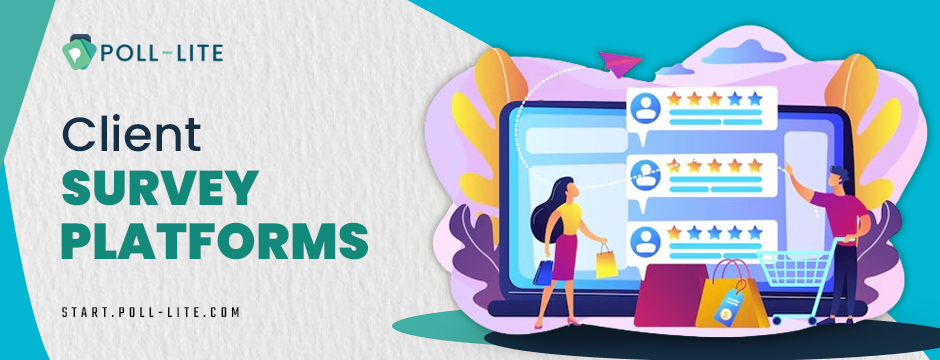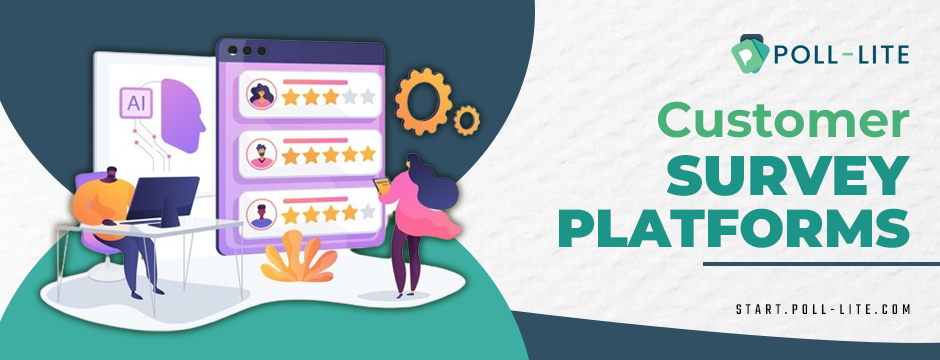In today’s rapidly evolving business landscape, remote work has become the norm rather than the exception. As companies continue to adapt to this new reality, maintaining high levels of customer satisfaction has never been more critical. One of the most effective ways to achieve this is through client survey platforms. These tools are indispensable for remote teams, providing valuable insights that can drive continuous improvement and ensure customer loyalty. In this blog, we’ll explore how remote teams can leverage customer survey platforms to keep the pulse of customer satisfaction and stay competitive.
The Importance of Customer Satisfaction
Customer satisfaction is a key indicator of a company’s success. Satisfied customers are more likely to return, recommend your business to others, and provide positive reviews. Conversely, dissatisfied customers can harm your brand’s reputation and bottom line. For remote teams, staying connected with customers and understanding their needs and concerns can be challenging, making the role of survey platforms even more crucial.
What Are Client Survey Platforms?
Client survey platforms are software tools that enable businesses to create, distribute, and analyze surveys. These platforms help gather feedback from clients, customers, or employees, providing actionable insights to improve products, services, and overall customer experience. Some popular client survey platforms include SurveyMonkey, Typeform, and Qualtrics.

Benefits of Client Survey Platforms for Remote Teams
- Real-Time Feedback
Remote teams often need help with communication barriers that can delay feedback and hinder responsiveness. These survey platforms allow teams to collect real-time customer feedback and address issues promptly and efficiently. This immediacy can significantly enhance customer satisfaction and loyalty.
- Centralized Data Collection
Managing customer feedback can be cumbersome, especially for remote teams across different locations. These survey platforms offer centralized data collection, making it easy for all team members to access and analyze customer feedback. This centralization ensures everyone is on the same page and can collaborate effectively to improve customer satisfaction.
- Enhanced Collaboration
Collaboration is essential for remote teams, and these platforms facilitate this by providing shared access to survey data and results. Team members can work together to interpret feedback, identify trends, and develop strategies to address customer concerns. This collaborative approach fosters a culture of continuous improvement and customer-centricity.
- Customization and Flexibility
Every business is unique, and so are its customers. Customer survey platforms offer high customization, allowing remote teams to tailor surveys to their needs. Whether it’s a product feedback survey, a customer satisfaction questionnaire, or a Net Promoter Score (NPS) survey, these platforms provide the flexibility to create surveys that resonate with your audience.

- Advanced Analytics
Data is only as valuable as the insights it provides. These platforms come equipped with advanced analytics tools that help remote teams make sense of the data they collect. These tools can identify patterns, highlight improvement areas, and measure changes’ impact over time. With powerful analytics, remote teams can make informed decisions that drive customer satisfaction.
How to Choose the Right Client Survey Platform for Your Remote Team
Selecting the right client survey platform is crucial for maximizing its benefits. Here are some factors to consider when making your choice:
- Ease of Use
A user-friendly interface is essential, especially for remote teams needing more luxury in-person training sessions. Look for an intuitive and easy-to-navigate platform, ensuring all team members can use it effectively.
- Integration Capabilities
Your chosen survey platform should integrate seamlessly with your team’s tools and systems, such as CRM software, email marketing platforms, and project management tools. Integration capabilities streamline workflows and ensure that survey data can be easily shared and utilized across the organization.
- Customization Options
As mentioned earlier, customization is key to creating surveys that resonate with your audience. Ensure that the platform offers robust customization options, allowing you to design surveys that align with your brand and meet your needs.
- Scalability
Your business needs may evolve, so it’s important to choose a client survey platform that can scale with your growth. Look for a platform that offers flexible pricing plans and can accommodate an increasing volume of surveys and responses.
- Security and Compliance
Data security is paramount, especially when dealing with sensitive customer information. Ensure that the customer survey platform you choose complies with industry standards and regulations, such as GDPR or CCPA, and offers robust security features to protect your data.
Best Practices for Using Client Survey Platforms in Remote Teams
To maximize the effectiveness of client survey platforms for remote teams, consider the following best practices:
- Set Clear Objectives
Before creating a survey, define clear objectives. What do you hope to achieve with the survey? Are you looking to gather feedback on a specific product, measure overall customer satisfaction, or identify areas for improvement? Setting clear objectives will help you design a focused and effective survey.
- Keep Surveys Short and Simple
Long, complex surveys can lead to survey fatigue and low response rates. Keep your surveys short, focusing on the most important questions that provide actionable insights. Use simple and clear language to avoid confusion.
- Use a Mix of Question Types
Various question types can keep respondents engaged and provide more comprehensive insights. Use a mix of multiple-choice, rating scales, open-ended, and yes/no questions to gather quantitative and qualitative data.
- Personalize Your Surveys
Personalization can significantly increase response rates. Use the respondent’s name, reference their recent interactions with your company, and tailor questions to their specific experiences. Personalization shows that you value their feedback and are genuinely interested in their opinions.
- Follow Up on Feedback
Collecting feedback is only the first step; acting on it is what truly drives customer satisfaction. Analyze the survey results, identify key areas for improvement, and implement changes based on the feedback received. Follow up with respondents to inform them of the actions taken and thank them for their input.
- Monitor and Measure Performance
Monitor the performance of your surveys regularly and track key metrics such as response rates, completion rates, and customer satisfaction scores. Use this data to refine your surveys and improve your feedback collection process.
Conclusion
In the age of remote work, staying connected with customers and maintaining high satisfaction levels can be challenging. However, remote teams can gather, analyze, and act on customer feedback using client survey platforms. These platforms provide real-time insights, enhance collaboration, and drive continuous improvement, ensuring your business remains customer-centric and competitive.
By choosing the right customer survey platform and following best practices, remote teams can monitor customer satisfaction and foster lasting relationships with their clients. In a world where customer expectations constantly evolve, leveraging the power of survey platforms is not just an option—it’s a necessity.
If you want the best survey platform, visit us at Poll Lite!

